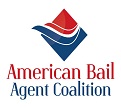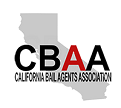Downey Bail Bond is the amount of money required by the court to release a defendant from custody and to guarantee her/his appearance in court. Bail can range anywhere from $50 for a simple misdemeanor to $1 million for serious felonies. In all cases either cash or a Downey Bail Bond must be given to the court for security. When bail is set high, most will chose to rely on a Bail Bond Agency instead of trying to raise the cash for the full bail amount. Once a Downey bail bond is posted and the defendant is released, the Downey Bail Bond Agency then becomes responsible for that defendants’ appearance in court. If the defendant fails to appear when required the court will “forfeit” the Downey bail bond and demand payment from the Downey bail bond agency. The agency, in turn, will do what is necessary to return the defendant to custody and recover their costs.
The transaction for having someone released on bond is fairly simple; you are the “indemnitor”, or person(s) willing to be responsible for the defendant while they are out on bail, and you pledge some property (collateral) to us to guarantee the bond, we then guarantee the cash to the court and the defendant is released soon after. For this service, agencies charge a yearly premium of 10% of the bail amount, which is set by the Downey Department of Insurance, and is not refundable once the defendant is released. The bond stays into effect until the case is over and the court orders the bond “exonerated”. Upon exoneration of the bond, the collateral is returned to the indemnitor(s).
When an individual is arrested for a crime, the person is typically taken to a local detention facility for booking prior to incarceration in a lock-up station or county jail. Once arrested and booked, the defendant has several options for release pending the conclusion of his or her case.
The Bail system is designed to guarantee the timely appearance of a defendant in court. Bail is also an insurance policy for the state that the defendant will appear to face charges. Further, the legal intent of release on Bail is not to relieve the defendant of obligations except for appearing, it is the retention of control over the defendant to the end that justice might be administered.
The Surety Bond is a series of contracts which guarantee the defendant’s appearance in court. When a Downey Bail Bond Agency guarantees that appearance, it is called a Surety Bond and the Bond Agency is fully liable if the defendant does not appear through an insurance company, called the Surety. In turn, the Bond Agency charges a Premium for this service and often requires collateral from a guarantor. The guarantor generally knows the defendant and is guaranteeing appearance in court. Ironically, while a defendant who fails to appear in court is subject to additional charges, he or she is not normally liable for any bond forfeitures (unless the guarantor arranges such an agreement with the defendant).
The bail licensee should endeavor constantly to be informed regarding current laws, proposed legislation, governmental orders or regulations, and other significant information and public policies which may affect the interests of the client.
The bail licensee should make a constant practice of full and complete disclosure to all parties, be they principal or indemnitor, of any and all possible liabilities, penalties or detriments which may arise from their involvement in that particular undertaking which secures the release from custody of a person who is charged with a criminal offense.
The bail licensee should not, prior to forfeiture or breach, arrest or surrender any principal and thereby terminate his or her release from governmental custody unless the licensee can materially show good cause for such action.
The bail licensee, upon receipt of notice of forfeiture or breach where notice is required, or upon personal knowledge of forfeiture or breach, should promptly and formally notify any and all indemnitors and real parties of interest of the forfeiture or breach by the principal, and the bail licensee should at that time concisely state the liability thereby incurred or pending.
The bail licensee should supply all indemnitors to an undertaking with a true copy of any document representing a binding legal contract to which she or he is to be or is being committed.
When an examination of the material factors of a potential undertaking reasonably convinces the bail licensee that she or he will be unable to undertake that particular bail relationship, the bail licensee should immediately inform all involved parties that she or he will not be able to secure the release of the defendant so that the defendant or his or her affiliates may promptly seek his or her release by another means.
Every bail licensee should comply in full with the laws and regulations governing the transaction of bail. Such compliance must necessarily include those matters dealing with the trust and fiduciary relationship as it relates to moneys and properties which may secure and undertaking. The highest moral and ethical practice should be maintained when entering into a trust or fiduciary relationship.
The bail licensee should not, except as provided by law, engage in activities that constitute the practice of law, and should refrain from making comments and representations which may lead the public to believe that the bail licensee is practicing law. [Practicing attorneys are generally not allowed to hold Bail Agent licenses]
Unless compelled to do so by law or by court order, the bail licensee should not divulge or disclose to any person or agency personal information regarding the principal or indemnitor of an undertaking which has not been forfeited or breached. The inherent right to privacy of the individual, and the position of trust of the bail licensee, demand compliance with this concept.
The bail licensee should make great efforts to verify and confirm any information which he or she may give to a court, law enforcement agency, or any other public agency.
The bail licensee shall not conspire with other bail licensees to regulate rates or restrict trade with the bail profession. The bail licensee should avoid controversy and conflicts with fellow bail licensees, and should not voluntarily disparage the business practice of a competitor, nor volunteer an opinion of a competitor’s transaction. However, the bail licensee should also inform fellow bail licensees of established hazards involving a prospective client if such hazards truly exist.






Give Us A Call
Drop Us a Line
10911 Brookshire Ave, Downey, CA 90241, USA






Give Us A Call
Drop Us a Line
10911 Brookshire Ave, Downey, CA 90241, USA